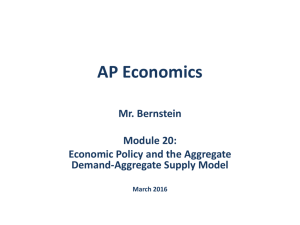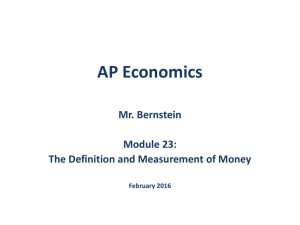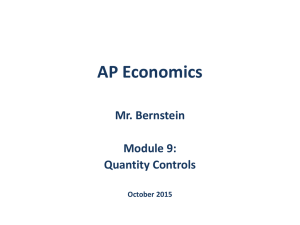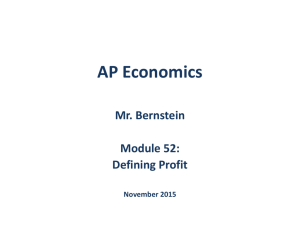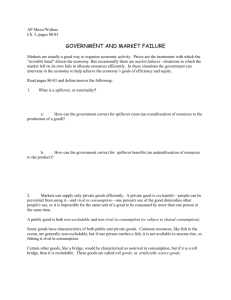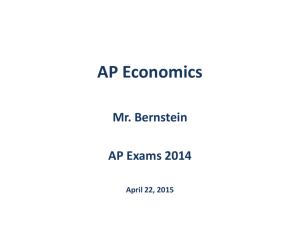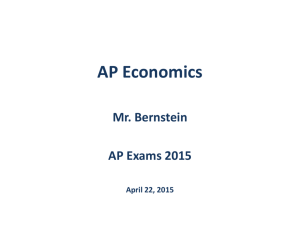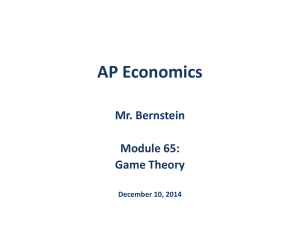Law for Business
advertisement
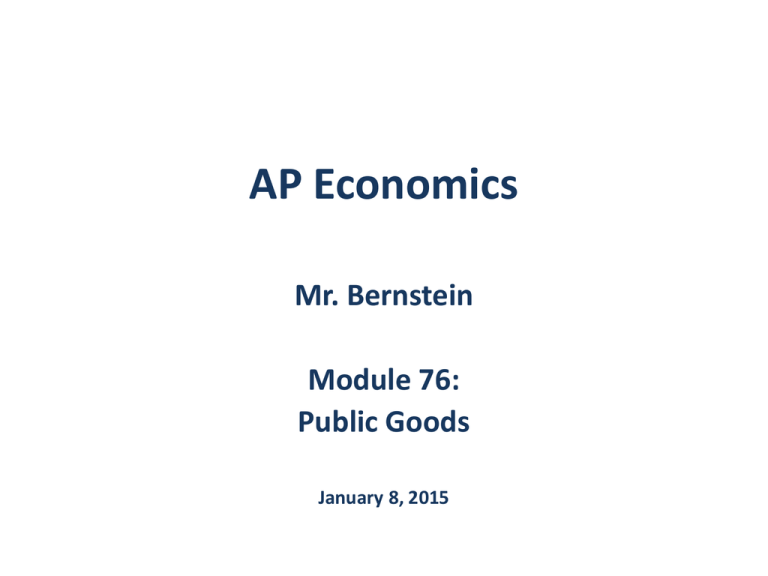
AP Economics Mr. Bernstein Module 76: Public Goods January 8, 2015 AP Economics Mr. Bernstein Public vs Private Goods • Private Goods • Excludable - Suppliers can prevent those who don’t pay from consuming • Rival – Cannot be consumed by more than one person at the same time • Public Goods • Non-excludable and non-rival • Example of Public Good: Fire Department (nonrival, benefits neighbors as well as burning house) 2 AP Economics Mr. Bernstein Common and Artificially Scarce Resources • Common Resources • Non-excludable but rival • ie fish in the ocean…anyone can catch them but only one person at a time can consume • Artificially Scare Resources • Excludable but non-rival • Pay-per-view movies 3 AP Economics Mr. Bernstein Public, Private, Common and Artificially Scarce 4 AP Economics Mr. Bernstein Markets Only Provide Private Goods Efficiently • Freeloader problem • Efficient level of Public Good is where MSC = MSB • Variation of MC = MR • MSB is sum of individual MSB curves 5 AP Economics Mr. Bernstein Common Resources • Example: Well water • Nonexcludable, rival • “Tragedy of Commons” (1968) • User imposes very small cost to society so individual will overuse • Solutions include tax or regulate users, system of tradable licenses, or otherwise making resource excludable and assigning rights (ie logging Public Lands) 6 AP Economics Mr. Bernstein Common Resources • S is sum of individual supply curves • Does not include cost imposed on others • As a result, MSC lies above S • Equilibrium is higher than optimal (MSC=D) point 7 AP Economics Mr. Bernstein Efficient Level of Artificially Scarce Goods • Example: Pay Per View (On Demand) • Excludable, nonrival • MC ~ = zero • So the efficient quantity is where Demand curve intersects MC = 0 line… • But there is no profit there, so firm excludes some customers by charging $5 to view and quantity ordered is less than efficient quantity 8
